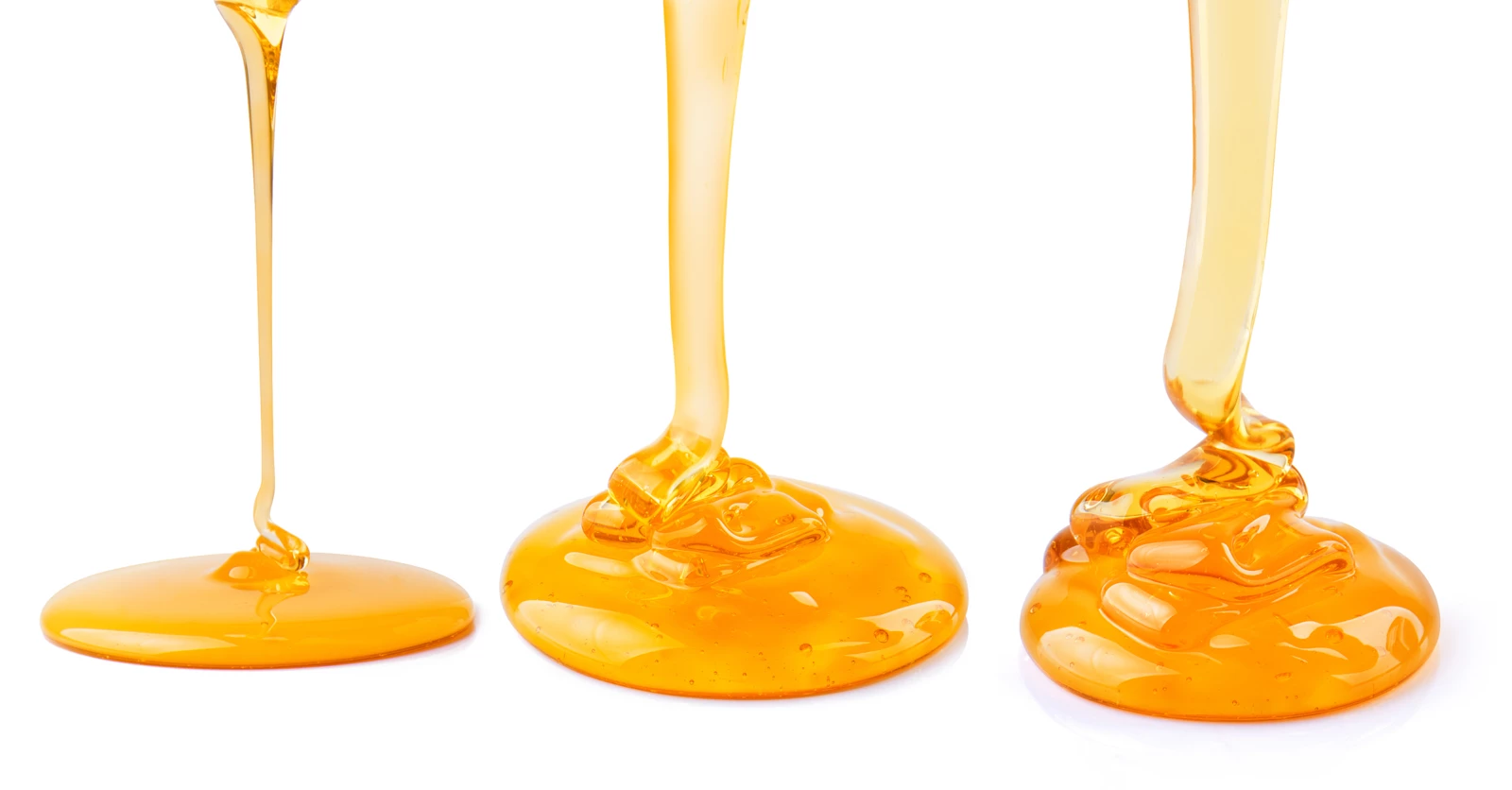
13.04.2023 by Dr. Shona Marsh
Viscometer or Rheometer – which is best for me?
Deciding whether to purchase either a viscometer or a rheometer is not always straightforward. This guide will take you through the differences and how a rheometer could be more suited for your needs.
What’s the difference?
Typically a viscometer employs a mechanical bearing that limits the speed and torque capabilities of the instrument, whereas a rheometer uses a low friction air bearing. This means a viscometer can be a solution for material, process or production tests that require simple flow measurements on Newtonian materials (where viscosity is independent of shear rate), however the performance of a rheometer allows far greater characterization of flow, deformation and even the TackinessTackiness describes the interaction between 2 layers of identical (autohesion) or different (cohesion) materials in terms of surface stickiness.tackiness of a material (for Newtonian and Non-NewtonianA non-Newtonian fluid is one that exhibits a viscosity that varies as a function of the applied shear rate or shear stress.non-Newtonian materials).
A viscometer can offer portability for field or remote testing. Rheometers, while generally more expensive than viscometers, are more versatile and have a much wider dynamic range of control and measurement parameters.
Measuring Viscosity
Measuring viscosity is the most common application required for a viscometer or rheometer. For most products, the viscosity is required to be high at low shear rates to prevent sedimentation or slumping, but to thin down at higher shear rates to facilitate application or processing. Hence a single viscosity measurement is not sufficient to describe the viscosity of such materials and the viscosity should be measured over a range of shear rates or stresses.
Typically, a viscometer can measure in the range of about 0.1 to 103 s-1 while a rheometer extends the measurement range from 10-6 to 105 s-1. A broader measurement range enables relevant data to be obtained by exposing the sample to conditions that are realistic to the conditions applied during product manufacture or use.
Processes such as sedimentation are best suited to analyze with a rheometer due to its low torque capabilities. High speed control of a rheometer also allows analysis of a very high shear rate process, such as spraying.
| Process | Minimum shear rate (s-1) | Maximum shear rate (s-1) | Viscometer | Rheometer |
| Reverse gravure | 105 | 106 | ✔ | |
| Spraying | 104 | 105 | ✔ | |
| Blade coat | 103 | 105 | ✔ | ✔ |
| Mixing/stirring | 10 | 103 | ✔ | ✔ |
| Brushing | 10 | 103 | ✔ | ✔ |
| Pumping | 1 | 103 | ✔ | ✔ |
| Extrusion | 1 | 102 | ✔ | ✔ |
| Curtain coating | 1 | 102 | ✔ | ✔ |
| Levelling | 10-2 | 0.1 | ✔ | |
| Sagging | 10-2 | 0.1 | ✔ | |
| Sedimentation | 10-6 | 10-2 | ✔ |
Yield stress
After viscosity, yield stress is probably the more routinely measured rheological property because many consumer products gain value from having one.
Yield StressStress is defined as a level of force applied on a sample with a well-defined cross section. (Stress = force/area). Samples having a circular or rectangular cross section can be compressed or stretched. Elastic materials like rubber can be stretched up to 5 to 10 times their original length.stress varies as a function of the temperature and timescale during which the StressStress is defined as a level of force applied on a sample with a well-defined cross section. (Stress = force/area). Samples having a circular or rectangular cross section can be compressed or stretched. Elastic materials like rubber can be stretched up to 5 to 10 times their original length.stress is applied. Rheometers can provide more relevant yield StressStress is defined as a level of force applied on a sample with a well-defined cross section. (Stress = force/area). Samples having a circular or rectangular cross section can be compressed or stretched. Elastic materials like rubber can be stretched up to 5 to 10 times their original length.stress data than a viscometer by enabling application of the broad range of these methods. Applying a StressStress is defined as a level of force applied on a sample with a well-defined cross section. (Stress = force/area). Samples having a circular or rectangular cross section can be compressed or stretched. Elastic materials like rubber can be stretched up to 5 to 10 times their original length.stress ramp is looked upon as the easiest way with a rheometer.
Which is best for me?
The increased versatility and performance make rheometers an excellent tool for research, product and process development, as well as quality control testing. Both viscometers and rheometers are complementary, and it is not uncommon within a single organization to find viscometers used for QC testing on products that have been developed using a rheometer. However, with the versatility and power of the Kinexus software, both R&D and QC measurements (with pass fail criteria), including the option of 21 CFR (for the pharmaceutical industry) can be customized to suit sample type, application and operator.